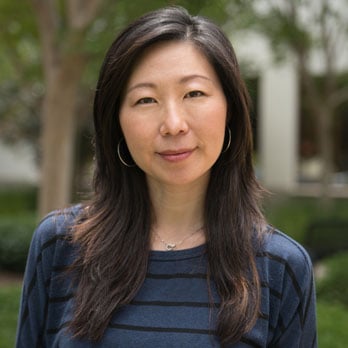
Many educators have experienced that lightbulb “aha!” moment about productive struggle—when we realized the truth about how our potential for growth and creativity is unleashed to the extent that we learn to persevere, figure things out on our own and bounce back from failure. We also know that one of the most important arenas to explore this truth is in our nation’s classrooms.
For this reason, we asked you, teachers and school leaders, to share how you facilitate this critical learning characteristic in students. We’re posting some of your responses here for everyone’s benefit. Thank you for contributing to this conversation! And we know there are more productive struggle enthusiasts out there—we welcome you to join the conversation.
By Lianna Nix
Director, Rex Mill’s STEM Academy Program, Jonesboro, GA
I believe intensely in allowing a healthy measure of struggle in learning, which engages the pre-frontal cortex in sense-making. In education, I find it powerful to facilitate a learning process that includes pondering, asking questions, thinking “around” a problem, researching, asking more questions, brainstorming, testing, assessing, and communicating. This culture is developed when mistakes are honored and analyzed as a significant part of the learning cycle. This is the engineering, design and/or problem-solving process so inherent in STEM education.
There are many problems I offer students for which I myself do not have a fully developed answer or solution. Thinking aloud with them supports them in understanding that "real-world" problems are similarly approached—they learn that the feeling of starting from a position of making sense of the problem or question, along with the disequilibrium and uncertainty that comes with it, is a normal part of life and learning. For a problem where I do know where it leads and the standards they will discover along the way, I allow just enough frustration to motivate but not to overwhelm. I might need to scaffold the problem-solving process by asking a framing question, such as, “What information or process would be useful to you right now?” Then I require that they articulate specific questions to elicit those. Sometimes students have not yet been trained in strategic questioning, which I then must model. It is truly all about building a learning community around the norms of shared inquiry and problem solving.
By Andrew Gael (with an assist from Robert Kaplinsky)
Math Coach/Coordinator, Cooke Center Academy, NYC
Frustration is a four-letter word in special education classes. If a student with a disability (or even without) is frustrated they may shut down, act out, or flee and this can sometimes lead to anger. So limiting frustration is usually at the top of a special educator’s classroom management to-do list.
However, we do not want to limit productive struggle for students with disabilities. Some of the reasons are laid out by Robert Kaplinsky in his IGNITE session (shown below), including his primary point that with productive struggle you will see incremental gains made by students who are given the opportunity to persevere through problem solving.
If neurotypical students are given the opportunity to productively struggle and students with disabilities are not because of the fear of frustration, are we actually supporting students with disabilities or over-scaffolding to their detriment?
Excerpted from Andrew’s April 5 blog post Productive Struggle vs. Frustration.
By Osiris Carcamo
Teacher, LAUSD, Los Angeles
I teach kindergarten and have been using the ST Math game-based learning program with my students for a few years now. I have seen tremendous improvement. I encourage my students to "struggle" productively by allowing them to try multiple times to solve and understand the problem. I help them only if it is extremely necessary. I allow students to explain to each other what they learned, what problems they had and how they solved it. The students also keep a journal and have the opportunity to draw/write after they finish their ST Math time. I have seen a great difference—my students are not afraid to try to solve new problems and to use different ways. At the end of the year my students' math scores are very high. They are very competitive and have a genuine intrinsic motivation to learn, but at the same time are willing to cooperate to teach each other!
Interested in sharing your thoughts around productive struggle? Join the conversation by sharing on Twitter with @MIND_Research!

Heera Kang was Manager of Engagement Content and Design at MIND Research Institute. Productive struggle, growth mindset and equity in education are some of her favorite topics.
Comment